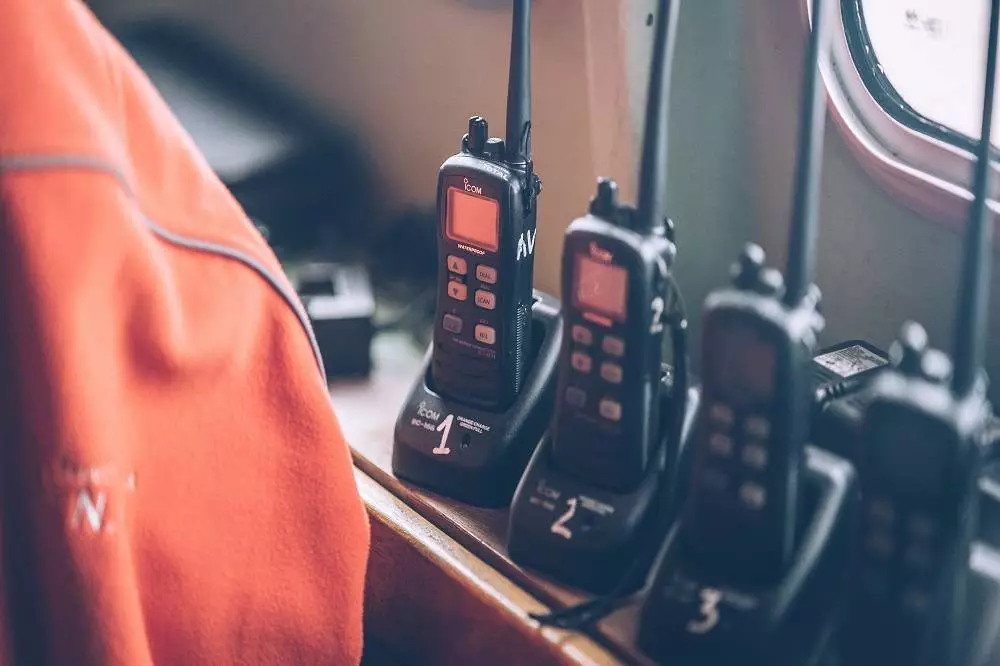Walkie talkies, also known as two way radios, use radio waves in order to communicate with each other. However, a lot of people are curious about the frequency used for these two way radios. So what frequency do walkie talkies use?
Surprisingly, the frequency used for walkie talkies is a broad range and splits into different types for various uses. So, if you want to know more about walkie talkie frequencies, keep on reading this article.
What is the Frequency That Walkie Talkies Use for Communication?
Walkie talkies use radio waves for communication. These waves are measured in Hertz (Hz), MegaHertz (MHz), or GigaHertz (GHz).
The radio waves exist in a huge range of frequencies that extend from as low as 30 Hz all the way up to 300,000 Mhz.
However, two way radios use a very small range that extends from 136 MHz all the way up to 900 MHz, according to the United States Federal Communications Commission (FCC).
Modern day walkie talkies use the FRS (Family Radio Service) range, which is a license-free frequency range that uses 22 channels in the 462 and 467 MHz range of the Ultra High Frequency (UHF) band.
However, the frequency range of walkie talkies may change according to various factors, such as the country, the device used, the purpose of the walkie talkie as well as whether you have a license or not.
A Brief Overview of the Different Frequencies Ranges of Walkie Talkies
Now that you know more about the frequency range that walkie talkies use, let’s have a closer look at the different types of frequency ranges and what they’re used for:
1. Family Radio Service (FRS)
This one uses frequencies that range from 462.5625 to 467.7250 MHz, which are split into 22 different channels in the UHF band.
This one is meant for personal use without requiring a license under the rules of the FCC, which makes it ideal for recreational walkie talkies as well as family and group activities.
The maximum power output for these frequencies range is either 0.5 watts (channel 8 to 14) or 2 watts (channel 1 to 7, 15 to 22).
2. General Mobile Radio Service (GMRS)
The GMRS is another popular radio service that is commonly used for transmitting data and information over short distances, so it’s also popular among walkie talkies.
Similar to the FRS, this radio service uses channels that range from 462 to 467 MHz. However, this one operates at a power output of up to 50 watts through 30 channels, and it requires a license from the FCC to run your walkie talkie over these frequencies.
You can obtain this license easily as long as you’re above 18 years old, and the permit should last for about 10 years. Read more about walkie talkie licenses here.
3. PMR446
The PMR446 is used as a walkie talkie frequency in the UK but not in North America and Australia because they’re assigned to military radar systems and amateur radio operators.
The transmission cycle lasts for less than 180 seconds with a total of 16 0.5 watt channels ranging from 446.00625 to 446.19375 MHz
4. Multi-Use Radio Service (MURS)
This one operates at 5 channels that range from 152.820 MHz to 154.600 MHz with a power output of 2 watts. In fact, it’s not permitted to use walkie talkies above 2 watts or repeaters with these waves.
This one also doesn’t require a license from the FCC, and it’s commonly used for transmitting voice communications and private information by businesses within a short distance.
5. Very High Frequency (VHF)
These frequencies are known for their ability to cover longer distances with significantly less power.
They operate at a frequency range of about 136 to 174 MHz, and they’re characterized for their ability to cross a longer distance.
This makes them ideal for outdoor use, such as in plains and large open fields. However, they lack the penetration ability of higher frequencies, so they’re not used when there are a few obstacles in the way.
6. Ultra-High Frequency (UHF)
These have a broader band that ranges from 400 MHZ all the way to 512 MHz. Thanks to the penetrative power of these waves, you can use these frequencies when operating walkie talkies inside buildings.
Walkie talkies that operate these waves are characterized by their small design as well as the size of the antenna.
7. Extreme Radio Service (EXRS)
These have the highest range of waves, which is about 900 MHz. These ones are also powerful in penetration, so they’re used in buildings too, with no restrictions to purposes or age.
Final Thoughts
This wraps it up for today’s guide that answers the popular question “what frequency do walkie talkies use?”
As you can see, the frequency range of two way radios varies according to their type, locations, and the licensing of the user.
This range extends from 136 to 900 MHz, with the most common waves ranging from 462.5625 to 462.7250 MHz of the FRS and the GMRS.
